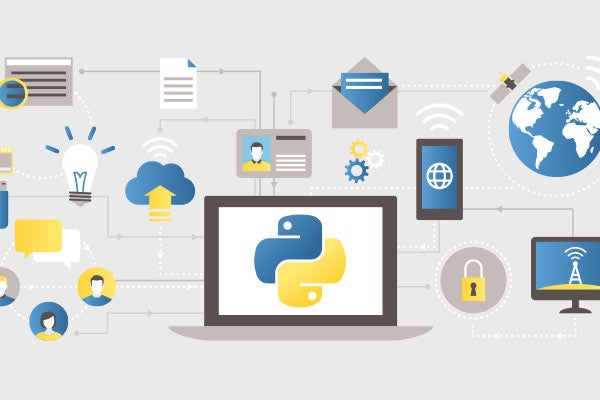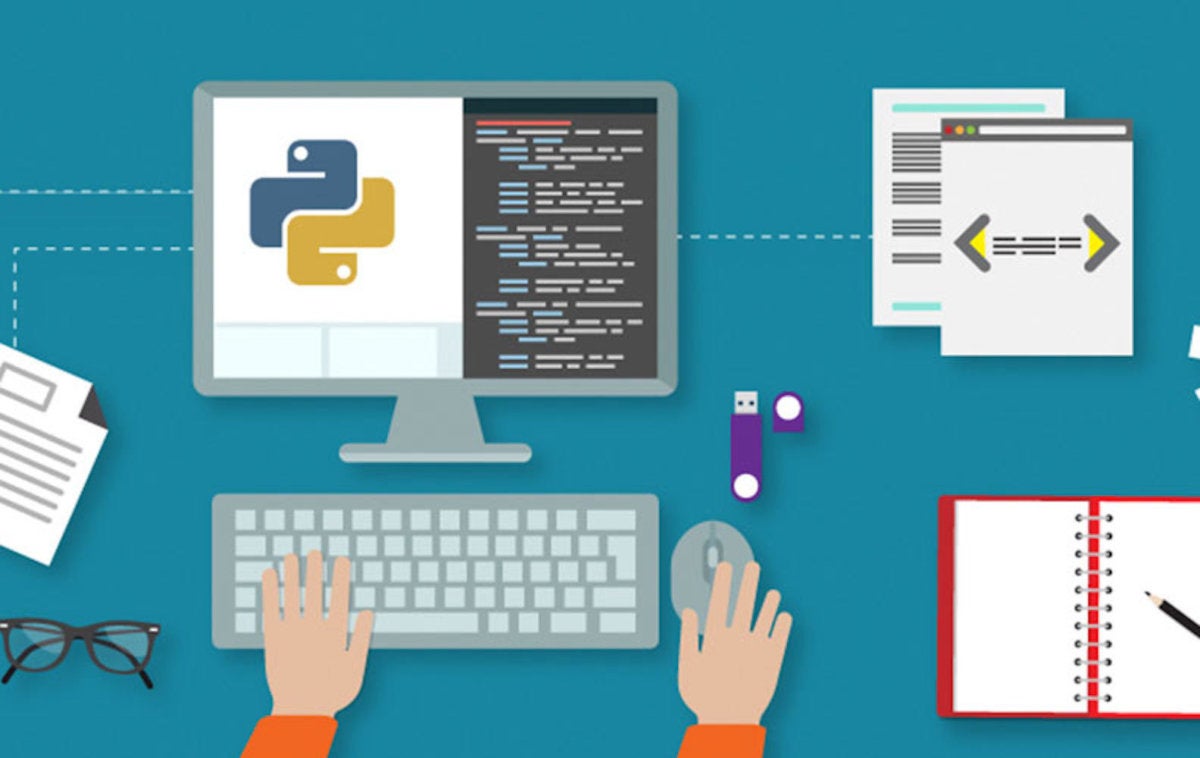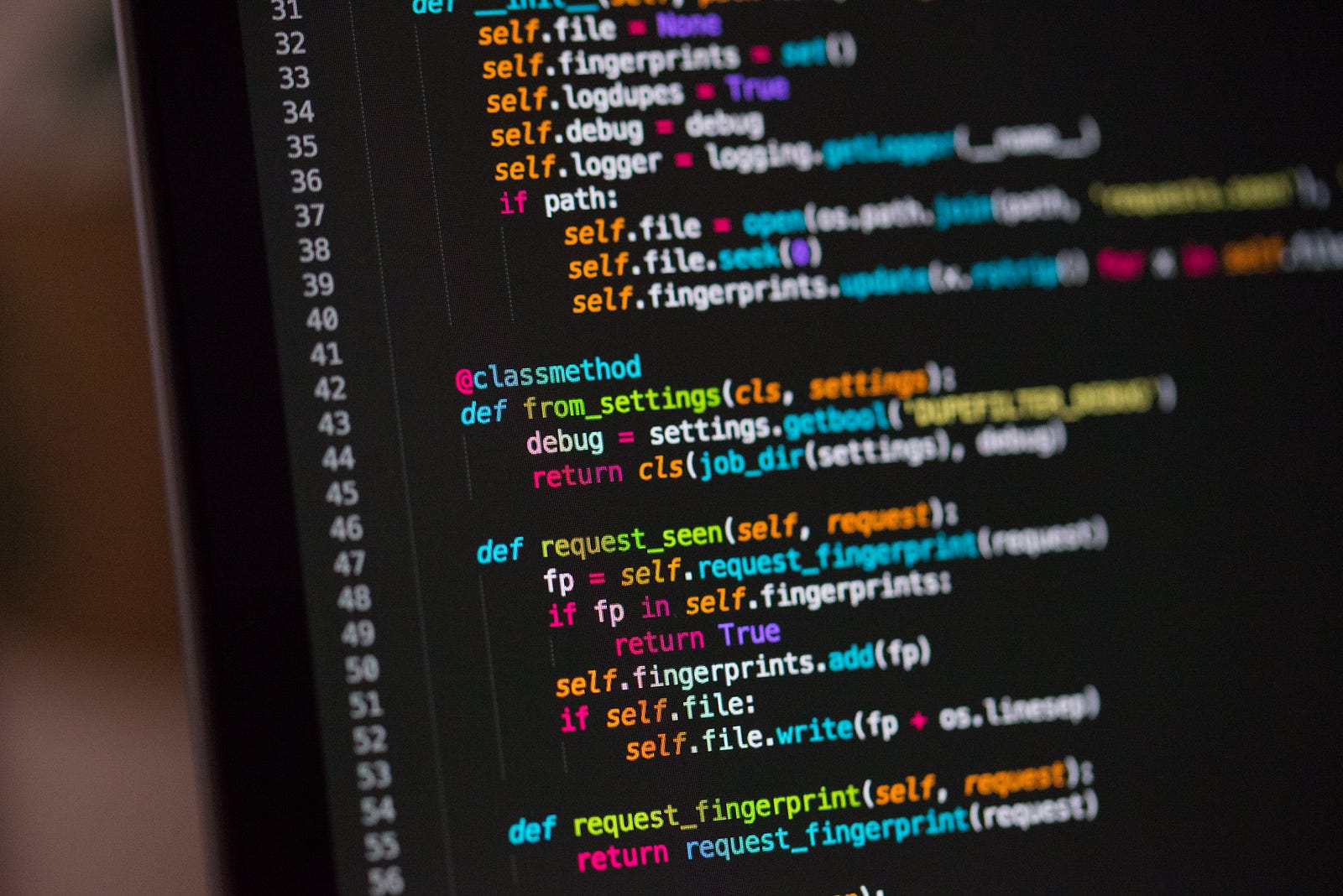Python is the most popular programming language. One of the most prominent reasons for its popularity is because of the versatility it offers to the programmer. In addition to this, Python is easy to learn and adapt.
Continuing our series on Python resources, where the first article covered ‘Top free learning resources for Python’, here is the second one, which will cover the top paid learning resources. These are the best certification courses online which will not only teach you the amazing programming language but will also reward you with a certification.
Top paid learning resources –
1. Introduction to Python
Introduction –
This course is offered by Stanford University.
This course aims at teaching how to use Python to transform and analyze large datasets. The approach will be through a comprehensive introduction to the most popular programming language with a focus on its application in data science.
This course will help you to get the fundamentals such as the basic syntax, programming and commonly used packages for data manipulation.
- Features –
- Lecture videos
- Lecture companion notebooks that enable you to practice in real-time as you watch videos
- Interactive exercise notebooks for ungraded, self-paced practice
- Duration – 6 weeks with 2-4 hours per week.
- Level – Beginner
- Mentor – Nick Henderson Affiliate, Stanford Institute for Computational and Mathematical Engineering (ICME)
- Requirements – Basic knowledge of computers and productivity software.
- Benefits of Introduction to Python – Build a solid base by understanding the fundamentals of programming.
- You will learn about –
- Basic Syntax: Variables and Data Types Functions File Input and Output Packages.
- Numpy, Scipy, Pandas, and Matplotlib
- Jupyter Notebook
- Receive a certificate after completion of the course.
- Destination – This course is available in Coursera.
- Cost – $. 129 USD or ₹.9200
2. Introduction to Computer Science and Programming Using Python
Introduction –
This course is offered by the Massachusetts Institute of Technology (MIT)
This course is the first of a two-course sequence: Introduction to Computer Science and Programming Using Python, and Introduction to Computational Thinking and Data Science. Together, they are designed to teach learners with no previous knowledge to think computationally and write programs with the help of Python.
This course is specially designed for beginners who have been looking to obtain a hands-on learning experience with Python. It promises to teach you concepts of programming right from the basics. So, if you’re a beginner and have never coded before and are looking for a way to start, this is the right destination for you.
- Features –
- Lecture videos
- Lecture exercises
- and problem sets using Python 3.5
- Duration – 9 Weeks with 14-16 hours per week
- Level – Beginner
- Mentor – The MIT Trio will be taking these classes –
- John Guttag – John Guttag Dugald C. Jackson Professor of Computer Science and Electrical Engineering MIT
- Eric Grimson – Eric Grimson Bernard Gordon Professor of Medical Engineering, Professor of Computer Science MIT
- Ana Bell – Ana Bell Lecturer, Computer Science, and Electrical Engineering MIT
- Requirements – No previous knowledge required. Perfect course for those who want to begin their programming journey in Python.
- Benefits of the MIT course –
A brief introduction to many topics such as –
i. A Notion of computation
ii. The Python programming language
iii. Some simple algorithms
iv. Testing and debugging
- An informal introduction to algorithmic complexity
- Data structures
- This will allow the learners to have an idea of what is possible with Programming
- And they need to think about how to use Computation.
- Receive a certificate after the completion of the course from the prestigious, MIT.
- Destination – This course is available in EdX.
- Cost of the MIT course – $ 75 USD or ₹.5350

3. Learning Python with PyCharm
Introduction – This course Uses IDE or Integrated development environment platform to teach Python programming with PyCharm.
This allows the trainer to give you a personalized time table exclusively made for you. With his step by step guidance, time-table and PyCharm’s first-rate text editing tools, Learning Python not only becomes easy but fun too.
- Features –
- PyCharm as the platform is one of the most popular IDEs for the language.
- PyCharm’s first-rate text editing tools.
- 1 Month free trial helps you to find out whether you’re suitable for the course or not before investing your money in it.
- Duration – 2 months with 2-3 hrs of study per week.
- Level – Beginner
- Mentor – Bruce Van Horn.
- Requirements – No previous knowledge required. Perfect course for those who want to begin their programming journey in Python.
- Benefits of PyCharm Course –
You will learn –
- Installing the PyCharm, Git, and Pypy packages
- Adding functions
- Refactoring code
- Calling packages
- Debugging code
- Creating databases
- Working with in-line SQL
- Creating web projects with PyCharm
- And finally, learn how to integrate Python with web projects that include HTML and JavaScript, and create a project with the Flask microframework.
- Receive a certificate after completion of the course.
- Destination – This course is available in Lynda.
- Cost of the PyCharm Course – 1-month free trial then, $ 25 or ₹ 1783 per month.
4. Data Camp
- Introduction – This course teaches programming through training. It is an online portal full of new and regularly updated courses mostly focused on data science for Python language.
- Features –
- 9 free beginner courses to let you understand what the program is about and if it suits you.
- Statistical libraries such as Pandas and NumPy.
- Duration – 6 weeks with 4-6hrs per week.
- Level – Beginner
- Mentor – A group of expert tutors from Data Camp.
- Requirements – No previous knowledge required.
- Benefits of Data Camp –
- You learn best when you get to apply what you learn quickly.
- Master Python from scratch by learning the basics.
- This course combines short expert videos with immediate hands-on-the-keyboard exercises.
- Practice Mode with instant and personalized feedback on every exercise.
- Develop DataCamp Projects based on real-world problems.
- Receive a certificate after completion of the course.
- Destination – This course is available in Data Camp.
- Review –
“I think it is obvious that DataCamp is the best platform for those seeking to learn data science.”
- Cost of DataCamp – Nine beginner courses free, then $25 or ₹ 1783 per month

5. Python and Django Full Stack Web Developer Bootcamp
Introduction –
This course covers everything you need to know to build a website using Python, Django, and many more web technologies. Whether one wishes to change career paths, expand his current skill set, start his own entrepreneurial business, become a consultant, or just want to learn, this is the course for them.
Learn the latest technologies for building great web applications with Python 3 and Django.
- Features –
- 32 hours on-demand video
- 6 articles
- 7 downloadable resources
- Duration – 8 weeks with 5 hours of study per week.
- Level – Beginner
- Mentor – Jose Portilla, Data Scientist. Jose has a BS and MS in Mechanical Engineering from Santa Clara University and years of experience as a professional instructor and trainer for Data Science and programming.
- Ratings – 4.5/5 with 15,581 ratings.
- Requirements – No previous knowledge required.
- Benefits of Python and Django –
- Build a solid base by understanding the fundamentals of programming.
- Learn the power of Python to code out your web applications.
- Implement a full Models-Views-Templates structure for your site.
- Use Django as a back end for the websites.
- Learn how to take advantage of Bootstrap to quickly style sites
- Receive a certificate after completion of the course.
- Destination – This course is available in Udemy.
Review –
“I learned and enjoyed a lot in this class. The lectures are organized well. The instructor is very clear. This is a perfect class for beginners. It covers both the front end and back end. Be sure to check the Q&A forum. I found many of my questions answered already. For those who already know the basics of web development, this class may not be so helpful. I still have tons of questions and I can see myself searching and reading a lot later on, but because I took this class, I know where to find solutions and help. I highly recommend this class to beginners who want to learn web dev with Django!”
6. Learn how to write Python Programming for Big Data systems such as Spark and Hadoop
Introduction – Python is a high-level performing programming language with integrated dynamic semantics which is mostly used for web development as well as app development. Learn Python from scratch with 24 hours of Instructor-led Training and work on real-world projects and case studies to get extensive hands-on experience.
- Features –
- Get Free E-learning Access to 100+ courses
- Immersive hands-on training on Python Programming
- Understand Python Programming core concepts
- Duration – 2 months with 2-3 hrs of study per week.
- Level – Python certification is suitable for beginners, intermediate learners as well as Python experts
- Mode of Delivery & Trainer- Live Online (Virtual) training
- Prerequisites- Basic knowledge of programming concepts
- What will you learn?-
- Installing Python
- Master Python fundamentals
- Data Structures
- Conditional Statements
- Regular Expressions
- Object-Oriented Programming
- Destination – This course is available in KnowledgeHut
- Cost of the PyCharm Course – USD 1199

That concludes our list of ‘Top paid learning resources for Python’. Happy learning!













